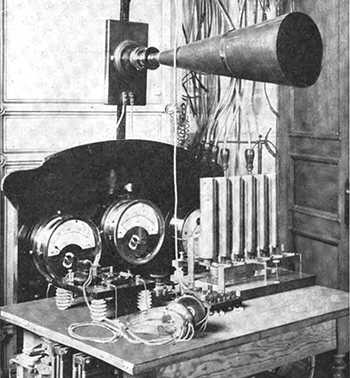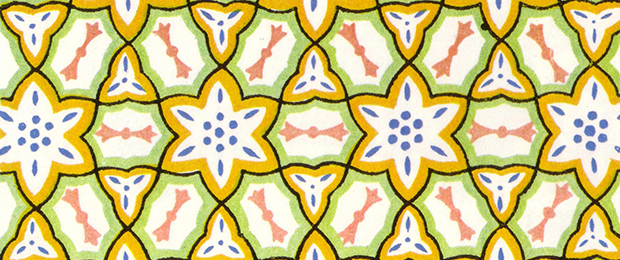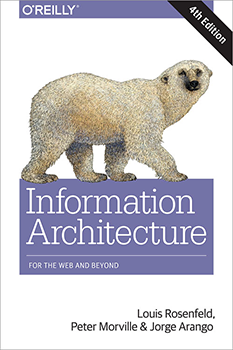"Experience Design and the Internet of Things" entries

Designing for voice and audio technology
A look at the underlying technology and considerations for VUI design decisions.
Download our new free report “Design for Voice Interfaces,” by Laura Klein. Editor’s note: this is an excerpt from the report.
Before we can understand how to design for voice, it’s useful to learn a little bit about the underlying technology and how it has evolved. Design is constrained by the limits of the technology, and the technology here has a few fairly significant limits.
First, when we design for voice, we’re often designing for two very different things: voice inputs and audio outputs. It’s helpful to think of voice interfaces as a conversation, and, as the designer, you’re responsible for ensuring that both sides of that conversation work well.
Voice input technology is also divided into two separate technical challenges: recognition and understanding. It’s not surprising that some of the very earliest voice technology was used only for taking dictation, given that it’s far easier to recognize words than it is to understand the meaning.
All of these things — recognition, understanding, and audio output — have progressed significantly over the past 20 years, and they’re still improving. In the 90s, engineers and speech scientists spent thou‐ sands of hours training systems to recognize a few specific words. Read more…

O’Reilly Design Conference Learning Paths
Our program will emphasize the full stack of skills designers need to work smarter.
Register now for the O’Reilly Design Conference, which will be held January 19-22, 2015, in San Francisco.
When reviewing the schedule for the O’Reilly Design Conference, you may wonder what shoe shopping with elders and the fisheries business have to do with design. Design’s impact is felt in every corner of our lives. And as a result, if you’re a designer you need to know more about more.
Remaining true to our roots, the O’Reilly Design Conference is all about learning new skills and bringing together different voices. We’ve planned several days of training for designers who want to increase their skill sets and widen their perspectives, including sessions on voice, industrial design, design thinking, prototyping, and running design reviews together with sessions like creative coding, and discussions on data, ethics, and privacy. Our program emphasizes the full stack of skills designers need to work smarter.
The keynotes we’ve lined up for Thursday and Friday morning will provide new perspectives, and a sense of how design is impacting business and society. You’ll hear designers talk about their experiences in the VC world and what it’s like when the experiences you craft live in both the physical and the digital worlds. After lunch on Thursday and Friday, the program gets broad. Whether you come for the conference, workshops, or intensive training days — or all three — I’ve laid out a few themes that can help to shape the sessions you choose to attend.
Here are some possible learning paths:
- I want to learn how to design for the digital and physical world
- I want to learn how to manage, lead, and have a larger impact within my organization
- I want to learn how to learn how to work effectively in cross discipline teams.
- I want to learn how to be better at user research and using data to create better products
- I want to learn how to apply my design skills to societal issues

This is why so many people have an opinion about design
With more companies focusing on design as a competitive advantage, it seems as if everyone is suddenly a designer.
Register now for OSCON EU, October 26 to 28, 2015, in Amsterdam, The Netherlands, where Tom Greever will present the session “Articulating design decisions.”
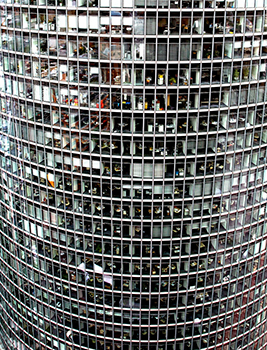 The more that I talk to people about what it means to explain design, the more I realize that everyone across all types of organizations — from product companies to nonprofits to universities to health care — is intensely interested in it. Everyone now has an opinion about design, and we’ve all been in the position of having to defend our choices or suggestions.
The more that I talk to people about what it means to explain design, the more I realize that everyone across all types of organizations — from product companies to nonprofits to universities to health care — is intensely interested in it. Everyone now has an opinion about design, and we’ve all been in the position of having to defend our choices or suggestions.
Developers, product owners, project managers, and even CEOs are intimately involved in design processes now — increasingly, it seems as if everyone is a designer. But it hasn’t always been this way — so, why now do so many people have an opinion about design?
In the past decade, design and UX has gone “mainstream.” The most popular and interesting companies have put design at the forefront of their product offerings, creating a buzz culture that drools over every new release and a fan following that promotes their brand for them. I’m not only thinking of Apple, but also brands such as IKEA, innovators like Tesla, and unique problem-solving designs from Dyson, Segway, or Nest. These brands command respect, elicit strong opinions, and foster loyalty from the people who follow them. This elevation of design conversations within today’s companies , organizations, and throughout the public in general exemplifies a democratization of design that we haven’t before experienced.
Here, I’ll explore several factors contributing to design’s growing ubiquity.
Social media has changed how people view digital products
It’s not only physical products that have transformed our understanding of the value of design. Social media platforms have shown that UX is a critical component to success. Millions of people use Facebook every single day. Each minor tweak to the UI or change to the design incurs the praise or wrath of every user. Why? Because Facebook (and other services like it) is a very personal part of our lives. Never before have we had a platform for sharing the most intimate and mundane details of our everyday experiences. Read more…

Understanding the rules of critique
Four rules to ensure critiques remain focused, efficient, and effective.
This excerpt was co-authored by Aaron Irizarry.
Register now for the O’Reilly Design Conference, which will be held January 19-22, 2016, in San Francisco. Adam Connor and Aaron Irizarry will present the session, “Discuss design without losing your mind.” Editor’s note: this is an excerpt from our recent book “Discussing Design,” by Adam Connor and Aaron Irizarry.
 There are four key rules of critique that we need to keep in mind. Paying attention to these rules will help to ensure that our discussion remains focused, efficient, and effective. It’s the facilitator’s job to make certain these rules are adhered to, but it’s a good idea to share them with the team.
There are four key rules of critique that we need to keep in mind. Paying attention to these rules will help to ensure that our discussion remains focused, efficient, and effective. It’s the facilitator’s job to make certain these rules are adhered to, but it’s a good idea to share them with the team.
Especially in formal critiques, we want to confirm that all participants know about and understand these rules. Don’t hesitate to review them quickly at the beginning of the discussion or post them in the room where the critique is being conducted.
Everyone is equal
Organizational hierarchy has an uncanny ability to make people feel like their perspectives and opinions carry more or less weight than others. Although it’s true that an organization might make decisions based on what its leaders think as opposed to other employees, it isn’t inherently true that their opinions are more accurate just because they’re executives.
It is important in a critique that we remember this and that everyone’s observations and perspectives are listened to equally. More attention should not be paid to those of a higher position just because of that position. You may be familiar with the acronym HiPPO (Highest Paid Person’s Opinion); it’s a killer when it comes to effective critique. Read more…

Data, design, and intuition
The O’Reilly Design Podcast: Pamela Pavliscak on designing for happiness.
Subscribe to the O’Reilly Design Podcast, our podcast exploring how experience design — and experience designers — are shaping business, the Internet of Things, and other domains.
In this week’s Design Podcast episode, I sit down with design researcher and data scientist Pamela Pavliscak. Pavliscak is the author of Data-Informed Product Design, a free report from O’Reilly, and will be speaking at OReilly’s inaugural design conference.
Pavliscak talks about the delicate relationship between data and design, and why it’s not an either or proposition, as well as why designing for happiness is good for business.
Here are a few highlights from our conversation:
We like to think in dichotomies for when it’s either data or intuition. I think of it more like archaeology. Archaeology is not always about finding the big celebrities or what the important heroes and personalities of history do. It’s about learning more about the everyday practices of people. You have these clues, these traces left behind. Like archaeology, the science gets more sophisticated. Archaeologists have remote sensing and X-ray guns. Data scientists have algorithms and AI. The big difference is, these people that we’re learning about with data science are still around. We can learn about them in their own words and rely on them to share their feelings and their context. For me, it’s not really an either-or, but more of kind of an improv ‘yes-and’ kind of relationship.
I always suspected that delight, that concept that we have in design, wasn’t the full story of what made people happy. The small moments, the small pleasures certainly factored in, but it really seemed that the patterns fell into this kind of deeper meaning. I would see people for Humans of New York — this is the happiest site in the world for people. Not in the sense that it’s showing happy things, but because it makes people feel connected. It’s connected to a story, and it’s connected to a story that’s not complete. There’s still room for people. Those are the kind of moments that came out.
You’ll find that happier employees are more productive and they find more meaning in their work at the same time. Even way back to the 80s, I found some research on product detachment, and found that happiness and brand detachment are somehow linked together. There’s Martin Seligman’s PERMA, there’s subjective well-being scale, there’s Maslow’s hierarchy, which of course we all know by heart. Countries are applying happiness initiatives to supplement their GDP. We’re learning more about this through behavioral economics and these different models.

Understanding the experience design of consumer IoT products
Great UX for IoT requires cross-discipline collaboration between design, technology, and business.
Download a free copy of our new report “User Experience Design for the Internet of Things,” by Claire Rowland, to learn about a framework for understanding the UX of consumer IoT products. Note: this post is an excerpt from the report.
 When we think of design for connected products, we tend to focus on the most visible and tangible elements. These are the industrial design of connected devices, and the user interfaces (UIs) found in mobile and Web apps and on the devices themselves.
When we think of design for connected products, we tend to focus on the most visible and tangible elements. These are the industrial design of connected devices, and the user interfaces (UIs) found in mobile and Web apps and on the devices themselves.
They are important concerns, which have a major impact on the end user’s experience of the product. But they’re only part of the picture. You could create a beautiful UI, and a stunning piece of hardware, and users could still have a poor experience of the product as a whole.
Designing for IoT is inherently more complex than Web service design. Some of this is to do with the current state of the technology. Some of this reflects our as-yet immature understanding of compelling consumer IoT value propositions. Some of this stems from the fact that there are more aspects of design to consider. Tackling them independently creates an incoherent user experience (UX).
Designing a great connected product requires a holistic approach to user experience. It spans many layers of design, not all them immediately visible. More than ever, it requires cross-discipline collaboration between design, technology, and business. Great UX may start with understanding users. But the designer’s ability to meet those users’ needs depends on the technology enablers, business models, and wider service ecosystem. Read more…

Design for understanding
How Information Architecture helps create environments that are understandable and useable by human beings.
Register for the O’Reilly Design Conference, which will be held January 19-22, 2016, in San Francisco. Jorge Arango will be speaking at the event about information architecture and semantic environments.
Editor’s note: This post is an excerpt from “Information Architecture, 4th Edition,” by Jorge Arango, Louis Rosenfeld, and Peter Morville.
We only understand things in relationship to something else. The frame around a painting changes how we perceive it, and the place the frame is hanging in changes it even more: we understand an image displayed in New York’s Museum of Modern Art differently than one hanging in a shared bathroom in a ratty hotel. Context matters.When designing an information architecture, we are engaging in a new type of placemaking: one that alters how we perceive and understand information. As with (building) architects, information architects are concerned with creating environments that are understandable and useable by human beings, and which can grow and adapt over time to meet their needs and those of their organizations.
In the previous chapter, we saw how the lens of information architecture can help designers make stuff easier to find by setting it in structures made of language. Now, we’ll explore how these structures can make stuff more understandable by molding the context that we perceive it in.
A sense of place
You get out of bed. You stumble clumsily to the bathroom for a morning toilet, then walk to the kitchen to brew a cup of coffee and toast some bread. It’s not even 6 a.m. yet, and you have already transversed three distinct places with different uses and configurations: bedroom, bathroom, and kitchen. Read more…

Survey says: Be promiscuous with your design tools
A look at results and insights from Khoi Vinh’s design tools survey.
Editor’s note: Khoi Vinh is a member of the program committee for O’Reilly’s Design Conference. Registration is now open — reserve your spot today.
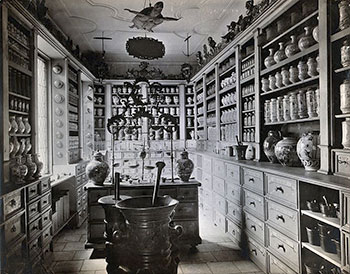 Khoi Vinh recently released his inaugural design tools survey. Vinh has been following the tools ecosystem for some time, and recently announced he will be joining Adobe. The survey focuses on six tasks designers manage: brainstorming, wireframing, interface design, prototyping, project management, and version control and file management.
Khoi Vinh recently released his inaugural design tools survey. Vinh has been following the tools ecosystem for some time, and recently announced he will be joining Adobe. The survey focuses on six tasks designers manage: brainstorming, wireframing, interface design, prototyping, project management, and version control and file management.
What jumped out at me? It’s a mixed bag, just as I expected. Pen and paper continues to be a key communication tool. I wasn’t surprised by the popularity of HTML and CSS, or Invision, but I was surprised by the lower ranking for Axure. It’s refreshing to see the investment in the design tools space, even if it the choices can seem overwhelming. Let me know what you think in the comments below or through Twitter (@marytreseler).
I sat down with Vinh to discuss the tools market and, specifically, the results and thinking behind his survey.
What prompted you to develop the tools survey?
The past two or three years have just been incredibly interesting for software geared toward digital designers. We’ve seen a slew of new contenders, and a whole new category — UX prototyping — where we get brand new apps seemingly once a month. So, I wanted to try to shed some light on all of this activity and get a sense of how these new applications are getting adopted, and by whom.
What were your findings?
At a high level, I found that it’s a very diverse market, which is itself a real statement. A decade ago, most everyone used Adobe’s tools for almost everything. Now you have up-and-comers like Sketch (from Bohemian Coding) and InVision both really taking hold in the market. Some categories have no clear winner, like prototyping. I think it’s all really exciting. Read more…

Designing responsibly in the attention economy
The O’Reilly Design Podcast: Tristan Harris on design ethics and leaving things better than you find them.
Subscribe to the O’Reilly Design Podcast, our podcast exploring how experience design — and experience designers — are shaping business, the Internet of Things, and other domains.
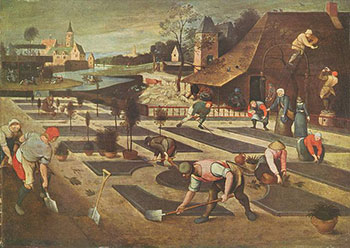 In this week’s Design Podcast episode, I sit down with Tristan Harris, design thinker, entrepreneur, and philosopher at Google, and speaker at O’Reilly’s first design conference.
In this week’s Design Podcast episode, I sit down with Tristan Harris, design thinker, entrepreneur, and philosopher at Google, and speaker at O’Reilly’s first design conference.
Harris talks about Design for Time Well Spent, the Doubt Club, and why it’s important to leave things better than you find them.
Here are a few highlights from our chat:
I think one aspect of why designers need to design responsibly is this new scale, this new proportion of influence and impact — because one choice about whether something takes five seconds of someone’s life versus one second of someone’s life gets multiplied by a billion people.
Even when the intention is very good and very positive, it devolves into what I’ve called the ‘race to the bottom of the brain stem’ to seduce people’s psychological instincts. The best way to get time from people, the best way to seduce or get their attention, is to use people’s psychological biases in a way that gets them to come back or stay.
Part of being ethical means being deeply thoughtful, comprehensive — not just optimistic about the one goal that you have, but to see where that goal might break down.

Every (successful) company is a service company
Designers are helping to shape the businesses, products, and services in our changing economy.
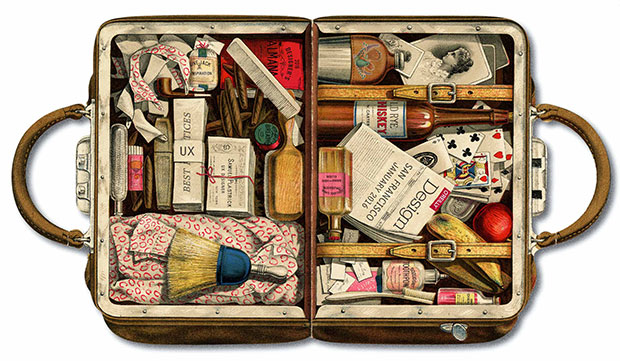
Register now for the O’Reilly Design Conference, which will explore the evolving role of design in business and society along with the tools designers need to shape the next generation of products and services.
Loosely defined, service is the relationship between consumer and company. There are traditional service companies, such as hotels and transportation companies, and their modern counterparts Uber and Airbnb.
Then there are companies that are changing their identities from product companies to service companies, with varying degrees of success: for example, IBM, morphing from hardware to services, and Adobe, moving its software model to a cloud-based, subscription-based service. Whether you’re new to the game or established, almost any product today must have a service aspect.
Why does this matter — and what does it mean for designers?
Tim O’Reilly wrote a recent piece on how the economy is being shaped by software and connectedness. He explained:
One way to think about the new generation of on-demand companies, such as Uber, Lyft, and Airbnb, is that they are networked platforms for physical world services, which are bringing fragmented industries into the 21st century in the same way that ecommerce has transformed retail.
The evidence is clear: we’re living in an attention economy, with thousands of devices and companies competing for eyeballs. Our products are now connected and smart, and the consumer-product relationship is long term, with data fueling the courtship. It’s no longer enough to have a great product — it needs to be coupled with a great service. Service is at the heart of any user experience, and designers are crafting this experience, forging the connections between products and consumers. Read more…
